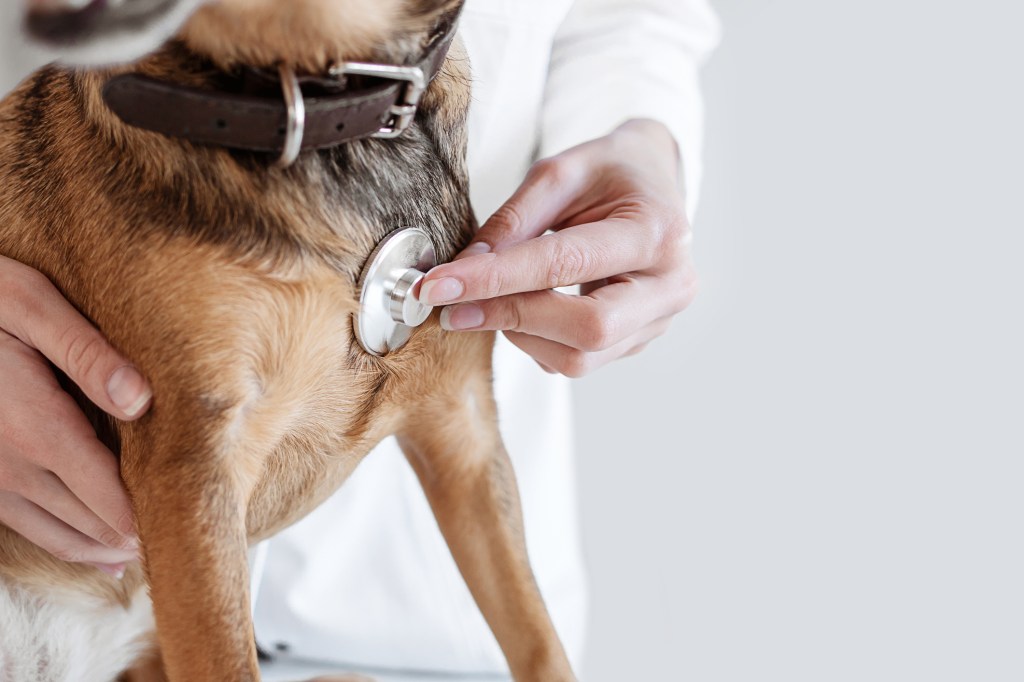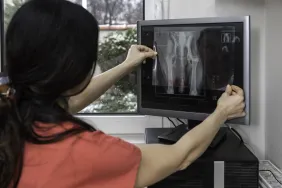Patent Ductus Arteriosus (PDA) in Dogs: Symptoms, Causes, & Treatments

Patent ductus arteriosus in dogs is a congenital heart disease that can be fatal. Sometimes, the condition is also referred to as PDA.
Technically, the problem arises when the ductus arteriosus artery does not properly close after a puppy is born. This allows blood to spread through the heart in abnormal ways.
Unfortunately, PDA is the second most common congenital heart problem in dogs. Moreover, certain breeds seem predisposed to it, including Miniature Poodles, Chihuahuas, and Pomeranians.
If you see signs that your dog might be suffering from this condition, then you must consult your veterinarian for a proper diagnosis and course of treatment. Here’s what you should know about the symptoms, causes, and treatments of patent ductus arteriosus in dogs.
@media (min-width: 0px) and (max-width: 749px) { .pb_prebidjs_300x250_a__wrapper { min-height: 250px; } } @media (min-width: 750px) { .pb_prebidjs_300x250_a__wrapper { display: none; } }
Symptoms of patent ductus arteriosus in dogs
The condition produces a wide range of symptoms, although they can be hard to spot at first. For example, some of the most common symptoms include:
- Heart murmurs
- Fatigue
- Weakness
- Collapse
- Coughing
- Shying away from exercise
- Abnormal pulse
- Seizures
Additionally, if PDA is not treated in time, it can lead to high blood pressure and congestive heart failure. Sadly, in some cases, it can prove to be fatal.
Causes of patent ductus arteriosus in dogs

The cause of PDA is usually congenital. This means that a dog is born with it. In particular, the following breeds seem predisposed to it:
- Irish Setter
- Labrador Retriever
- Kerry Blue Terrier
- Chihuahua
- Bichon Frise
- English Springer Spaniel
- Yorkshire Terrier
- Pomeranian
- German Shepherd
- Newfoundland
- Miniature Poodle
- Toy Poodle
- Shetland Sheepdog
- Keeshond
- Collie
- Cocker Spaniel
- Maltese
Additionally, other factors can play a role in causing patent ductus arteriosus. For example, the following factors are suspected to cause PDA:
- Environment
- Diet
- Medications
- Toxins
- Infections
Technically, patent ductus arteriosus happens when a pup’s ductus arteriosus fails to close properly. Usually, when the ductus arteriosus closes, blood can circulate through the lungs and become oxygenated. However, in cases of PDA, the open ductus arteriosus can cause blood to spread through a pup’s heart in abnormal ways.
Treatments for patent ductus arteriosus in dogs
If you think that your dog might be developing PDA, your veterinarian will want to carry out a full physical examination of your dog. Secondly, your vet will ask about your dog’s complete medical history. This will include any breed-specific problems.
Next, your vet will pay attention to the sound of your pup’s heart. Usually, a murmuring heart signifies the condition. Additionally, tests including ultrasounds, X-rays, and electrocardiograms (ECG) can confirm a case of PDA.
Ultimately, surgery is used to treat patent ductus arteriosus. Usually, this is carried out by a heart specialist. The ductus arteriosus needs to be closed by a process called a cardiac catheter occlusion or a thoracotomy. These procedures are carried out while your canine is under general anesthesia.
Afterward, you’ll need to provide a calm and quiet home environment for your dog to recover in. Initially, your pup’s exercise may need to be limited. Also, making a switch to a low-sodium diet can be considered to help keep your dog’s heart healthy.




